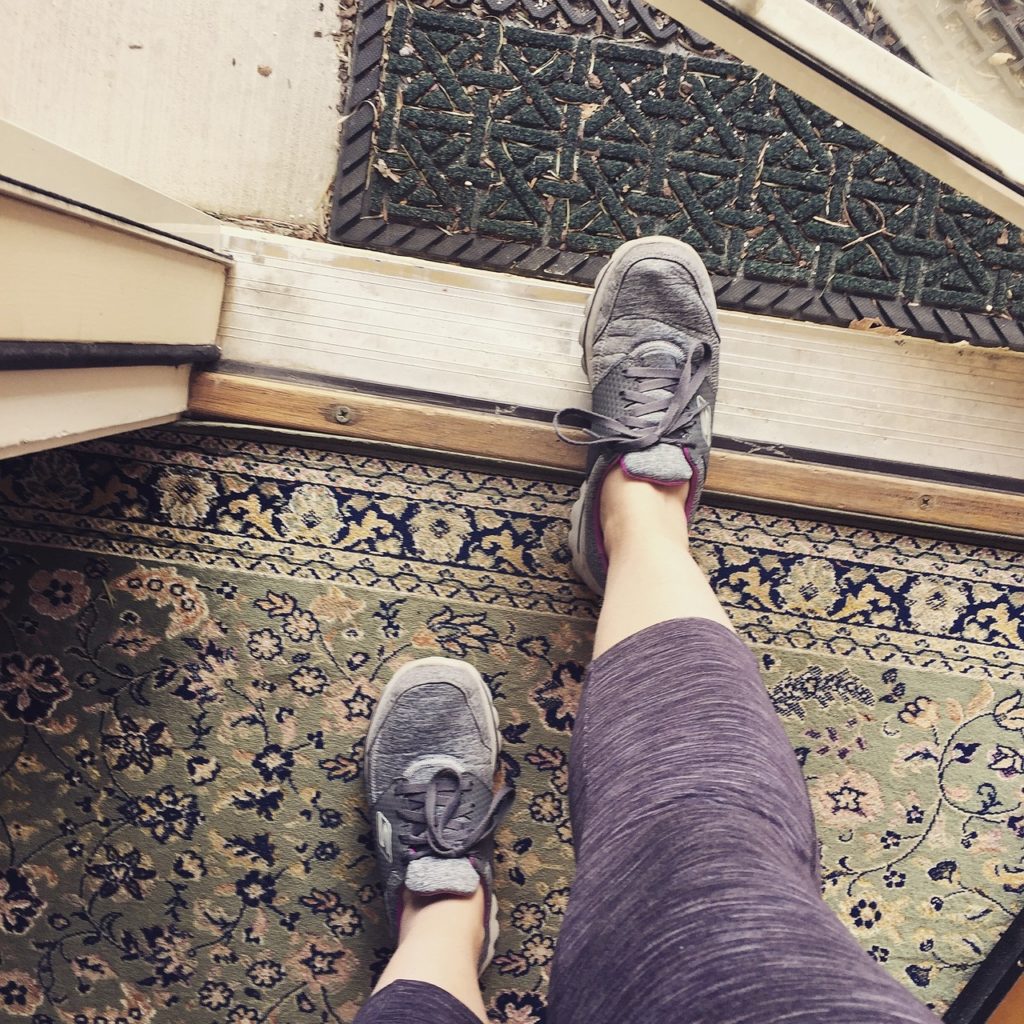
Something about the clean slate of a new year lures us into believing we might just be able to do things differently this time. In a few short weeks, we’ll not only have the promises of a bright, shiny new year, but a whole new decade to fill with our hopes, dreams, and goals. If you’re planning new fitness resolutions this year, keep reading.
The trouble is, we’re still the same person on January 1 that we were on December 31. If that person didn’t eat well or exercise regularly then jumping into a new fitness routine on January 1 is likely to lead to frustration. We want you to succeed in your fitness goals in 2020 not just on January 1 but on February 15 and May 23 and all the days beyond.
The key to successful navigation of your News Year’s fitness goals is preparing now. Why wait until January 1 to start taking more walks or joining a gym? Get started now with these simple steps.
- Start with a wellness check-up. Getting clearance from your medical provider before starting an exercise routine is particularly important if you have a chronic illness such as high blood pressure, diabetes, or asthma. Let your provider know you’d like to start exercising more and ask for his or her suggestions.
- Purchase a pair of good athletic shoes. Exercise doesn’t have to involve pricy gyms or expensive equipment. You will need the appropriate footwear. Your flipflops or slippers won’t cut it here. Choose shoes with good support that are made for the activity you’ve chosen. Running shoes will be lighter while cross-trainers will offer more support. Now’s the perfect time to put these on your Christmas wish list!
- Set a baseline. Every great goal starts by acknowledging where you are now. Take your resting heart rate. Record how long it takes you to walk 1 mile. Sit in the floor with your legs straight in front of you and see how far toward your feet you can reach without bending your knees. Count how many standard or modified push-ups you can do at one time.
- Choose activities you like and that offer easy access for you. Saying you’re going to ride your bike for thirty-minutes a day when you don’t own a bike won’t help you set your goals. If you plan to join a gym, choose one near your home or office so you have one less excuse for not going.
- Set specific goals. Planning to exercise more is a great resolution, but what exactly does more mean? A goal to walk 1 mile three times a week is both specific and reasonable, especially if you haven’t exercised much in the last year. If you already exercise but want to increase what you’re doing, build on where you are.
- Set realistic goals. In addition to specific goals make them realistic. Will you really get up at 3 a.m. to walk a mile every morning? Can you actually go to the gym after work if you have to pick up the kids? Know yourself and what you’re willing to do. Making fitness easy and accessible increases the chances you’ll stick with it.
- Set new goals every three months. Instead of setting a goal to stick with this fitness routine for a year aim for one month or three months. Re-evaluate after three months to decide if you like your current routine if you’re sticking with it, and what you may need to change.
- Be flexible. You thought you’d like swimming every day during your lunch hour, but cleaning up afterward puts you late getting back to work. Or maybe you still don’t feel comfortable at your gym after a month of going. You have more options. Choose another activity, another time, or another gym. Don’t quit one without a plan for how to fill your fitness time, but do allow yourself to change your mind.
- Reward yourself. We’re not talking about eating a cupcake after your fitness session. Choose other rewards like taking yourself to the movies, having a massage or purchasing that book you’ve been dying to read after you complete a certain number of exercise sessions in a row. Your reward don’t have to involve money. You might spend 30 minutes in a hot bath listening to music or allow yourself to watch an episode of your favorite television show.
- Put it on your calendar like any other appointment. You wouldn’t skip your doctor’s appointment or hair appointment. Put your exercise time on your calendar like any other appointment. If it’s written it’s more likely to get done.
- Tell your family and friends. If taking 30 minutes to walk after work will affect the schedule of other people in your family talk to them about what you’re doing a why. Better yet, invite them to join you! Find supportive family and friends who will ask you if you’ve exercised or will text you encouragement when they know you’re working out.
- Join a fitness class. Lack the motivation to workout alone? Most gyms offer group fitness classes led by trained instructors. Many allow you to try a class free before you join. The end of December is a great time to try new classes before you join in January. Use your time wisely!
- Exercise with friends. This one gets a little tricky. Some friends will push you to work harder, others will spend the entire time gabbing and you won’t actually work out. Find friends who also have fitness goals to reach and work together to get healthy.
- Use a fitness app to track your progress. Many free fitness apps for smartphones will track your exercise and estimate the number of calories you’ve burned. If you’re wearing a fitness tracker like FitBit or Apple Watch these devices will pair with your apps for even more information. You can also set fitness trackers to remind you to move periodically throughout the day.
- Drink more water. If you’re increasing your exercise, you need to increase your water even in the cold months. Choosing water over sports drinks, sodas, or sweet tea also reduces your calorie intake. And if you’re drinking more water you’ll have to walk to the bathroom more often which increases your step count. Win-win-win.
- Add variety to your workouts. Walking is a great, low-cost fitness option, but make sure to add some resistance training as well. Multiple repetitions with small hand weights or resistance bands build muscle without requiring a lot of fancy equipment. YouTube and Facebook offer plenty of videos from fitness experts. This type of exercise gives you a break on cold or rainy days when you can’t walk outside.
- Listen to your body. “No pain no gain” isn’t the right exercise message. Reaching your fitness goals shouldn’t hurt. As your abilities increase you may push yourself to work harder but start off easy. If your body is out of breath or tired take a break. Allow yourself a day to rest if you had a restless night or you are sick. Don’t use 1 or 2 days off as an excuse not to return to your exercise routine.
- Put on exercise clothes when you get home. Just putting on your exercise clothes and shoes is sometimes all the reminder you need to keep your commitment. If you’re exercising in the evening set your gym bag by the door to take with you to work or lay out your workout clothes so you see them when you get home. Remove as many excuses as possible.
- Monitor your progress. Remember that baseline you recorded? Go back every six weeks and record your progress. It might be small at first, but every extra push-up counts.
- Remember the best exercise you can choose is the one you’ll actually do.
We’re cheering for you and your 2020 fitness goals. Our providers are ready to talk to you about staying healthy this year and for years to come.





